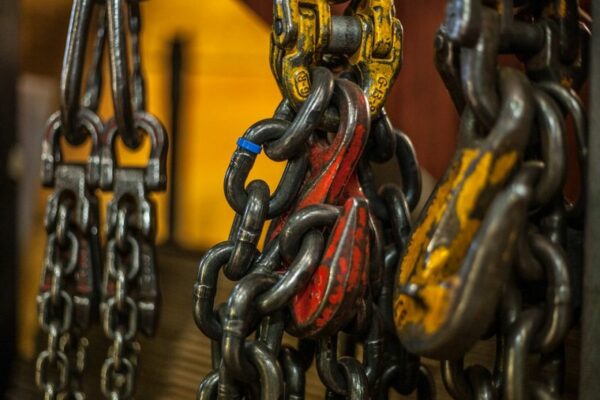Did you know that the invention of the chain block dates to ancient times? Archimedes, a famous Greek mathematician, created the pulley system to make it easier to lift heavy objects. As technologies changed there was a need for mechanisms that could lift objects to different heights.
Industries needed a system that could further reduce the load and hold heavy objects at a certain level. And this is where the chain block and tackle come in. This system is made of a combination of gears and pulleys to make it easier to hoist up heavy objects.
Keep reading to find out how this hoist works, how to choose the correct one for your business and its safety requirements.
What a Chain Block and Tackle is Used For?
Have you ever looked at the end of a crane or rigging on a sailboat? If you have, then you’ve seen a block and tackle and how they operate. It’s an arrangement of rope and pulleys that allow you to swap load for distance when pulling up an object.
On the other hand, these pulley systems can also be used with chains for other applications. A chain block is incredibly durable so it’s able to hoist up heavier objects such as building material, cars or shipping containers.
Industries that use chain blocks and tackles include:
- Mining
- The entertainment industry
- Construction
- Road works
- Mechanical engineering
- Shipping
In all these industries the chain block and tackleare used to lift loads that are impossible for people to hoist up high manually. The speed at which you’re lifting the load isn’t important, but precision is. The hoist carefully lifts loads without swaying.
How Does the Chain Block and Tackle Work?
The hoist is suspended using a beam clamp and is operated by double-chained loops, hand chain and lifting chain. Your hand chain is wound around a wheel that supports the lifting chain. When the hand chain is pulled the lifting chain hoists objects up when you place it on an end hook. You can also use the chain to lower the object.
How to Find the Right Chain Block and Tackle
Before you can buy a chain block and tackle for your lifting projects there are a few factors to consider first. In this section we’ll talk about capacity, lift distance and the type of hoists you can buy.
1. Type
Chain blocks come in various shapes and sizes to accommodate the thickness of the chain that you’re looking for. But there are only two types of chain blocks: manual and electric. The manual chain block will require someone to pull on the chain to lift objects. The electric hoist lifts objects automatically when you press a button.
2. Materials and Extras
Chain hoists are made with a combination of metal parts such as zinc, alloy and steel. You can also get a chain block with an overload activated clutch to prevent overloading the mechanisms.Chain blocks also come with trolleys if you want to move loads from side to side.
3. Lift Distance
When buying your hoist, you must choose one that has the correct lift distance. This is the distance from the installation point of the chain to the load that you want to lift. The most common chain block lift distances are 3 meters or 6 meters.
However, it’s important that you measure the lift distance you need first before you choose your chain hoist. If it’s incorrect, you’ll have to replace the chain.
4. Capacity
You must choose a chain hoist that can lift the loads you need to hoist. First, determine the weight of your load. Most hoists are made in ¼ ton or ½ ton increments so you will need to round up your load to the nearest number. If your load weighs over 1000kg you should choose a 2000kg capacity hoist.
Always choose a hoist that has a higher weight capacity than the loads you want to lift. Selecting a higher capacity will reduce wear and tear and increase the lifespan of your chain block.
5. Durability
Is your chain block and tackle durable enough to withstand the elements if you use it outside? Is it able to resist damage from oil or chemical spills? Choose a chain hoist that is made with hardwearing materials that won’t corrode, crack or melt when exposed to extreme environments.
6. Safety Requirements
The lifting equipment you choose must meet Australian safety standards. These guidelines specify the requirements for lifting equipment such as:
- Design
- Testing
- Maintenance
- Inspection before use
It’s important to know what the safety standards are for your lifting equipment to prevent injury or death when working with these devices.
Final Thoughts
Want the best results for your lifting job? Simply buy a hoist with the correct capacity and lifting distance. For heavier loads choose an electric hoist. For lighter loads pick a manual chain block.
Now that you know more about a chain block hoist you can use this article to choose the correct one for your lifting requirements.
Article Submitted By Community Writer




